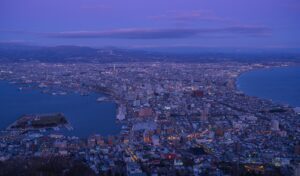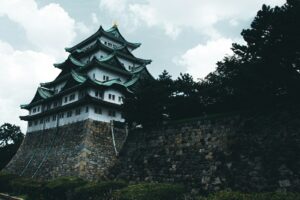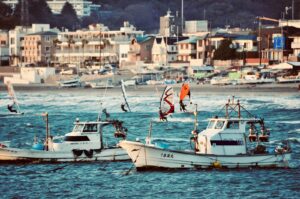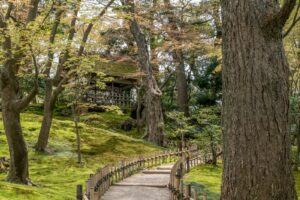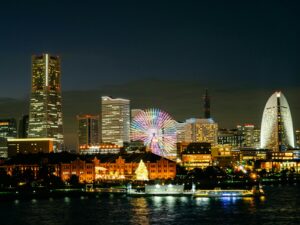Nestled in the vast expanse of the Pacific Ocean, Okinawa stands as a beacon of natural beauty and cultural richness. This southernmost prefecture of Japan, comprising hundreds of the Ryukyu Islands, offers more than just its renowned clear blue seas and white sandy beaches. From the historical landmarks in Naha to the untouched wilderness of the Yaeyama Islands, Okinawa invites travelers to immerse themselves in its diverse landscapes, vibrant festivals, and unique culinary traditions. Join us on a journey to explore Okinawa’s best views, uncovering the island’s hidden gems and experiencing the essence of its enduring charm.
Welcome to Okinawa: An Island of Endless Beauty
Okinawa, often referred to as the "Hawaii of Japan," is a place where the wonders of nature and rich history blend seamlessly. The island’s subtropical climate ensures year-round warmth, making it a perfect destination for those seeking both adventure and relaxation. From the moment you arrive, the crystal-clear waters and lush greenery promise a paradisiacal escape. The island’s compact size belies the diversity of its landscapes — from serene beaches to rugged cliffs, Okinawa offers a panorama of scenes that captivate and enchant. Its beauty extends beneath the waves, where coral reefs teem with life, presenting a kaleidoscope of colors and shapes. Above all, the warmth and hospitality of the Okinawan people make every visit unforgettable, inviting you to delve deeper into the island’s charms.
Unveiling Okinawa’s Hidden Gems: A Local’s Perspective
To truly experience Okinawa, one must venture beyond the tourist trails and explore its hidden gems. Locals recommend visiting the lesser-known beaches of the northern part of the island, where you can find secluded spots of unparalleled beauty. Inland, the ancient forests of Yanbaru host rare species of flora and fauna, offering a glimpse into the island’s primeval past. Traditional Ryukyuan villages, with their distinctive architecture and slow pace of life, provide a window into a lifestyle that has endured for centuries. For those willing to seek them out, these hidden treasures reveal a side of Okinawa that most visitors never see, marked by a profound connection to nature and tradition.
The Top 10 Panoramic Views in Okinawa
Okinawa’s landscape is a tapestry of breathtaking vistas, each offering a unique perspective on the island’s natural beauty. Among the most iconic is the view from Cape Manzamo, where the setting sun paints the sky in brilliant hues against the backdrop of the East China Sea. Another must-see is the Hedo Point, located at the northernmost tip of the island, offering dramatic cliffs and expansive ocean views. For a bird’s-eye view, the observatory at Kouri Island provides a 360-degree panorama encompassing turquoise waters and the intricate patterns of coral reefs below. The Nakijin Castle ruins, perched atop a hill, afford a view that stretches across the northern peninsula, while the Yaeyama Islands offer untouched landscapes that evoke a sense of serenity and isolation. Each of these spots showcases the island’s diverse beauty, capturing the essence of Okinawa through every lens.
Naha’s Historic Shuri Castle: A Must-See
Shuri Castle, located in the capital city of Naha, stands as a testament to Okinawa’s rich history and cultural heritage. Once the residence of the Ryukyu kings, this UNESCO World Heritage site combines architectural elements from Japan, China, and Southeast Asia, reflecting the island’s role as a vibrant trade hub. Despite suffering damage during World War II and a recent fire in 2019, the castle remains a symbol of Okinawa’s resilience and enduring spirit. Visitors can explore the reconstructed halls and courtyards, adorned with Ryukyuan art and artifacts, offering a glimpse into the royal court’s opulent past. The castle’s elevated position also provides sweeping views of Naha and the azure waters beyond, making it a must-visit for anyone seeking to understand Okinawa’s journey through the ages.
Exploring Ishigaki: Okinawa’s Pristine Paradise
Ishigaki, part of the Yaeyama Island chain, is renowned for its pristine beaches, crystal-clear waters, and lush landscapes. The island serves as a gateway to exploring the surrounding coral reefs, which are among the most vibrant in the world. Diving and snorkeling enthusiasts flock to spots like Kabira Bay, where the intricate underwater ecosystem is accessible even to novices. On land, the island’s interior is dominated by Mount Omoto, the highest peak in Okinawa, offering challenging hikes through subtropical forests. Ishigaki’s cultural landscape is equally rich, with traditional villages, markets, and the distinctively Okinawan cuisine waiting to be discovered. The island’s remote location has preserved its natural beauty and cultural heritage, making it an essential stop for those seeking an authentic Okinawan experience.
The Enchanting Sunsets at Cape Manzamo
Cape Manzamo, with its iconic elephant trunk-shaped cliff, is one of Okinawa’s most picturesque spots, especially at sunset. The cape’s name, meaning "a field for 10,000 to sit," hints at the vastness of the view it offers. As the sun dips below the horizon, the sky transforms into a canvas of fiery oranges, pinks, and purples, reflecting off the tranquil waters of the East China Sea. This natural spectacle draws visitors from around the world, seeking to capture the moment when nature’s beauty reaches its zenith. The surrounding area, with its rich flora and coastal trails, invites exploration, revealing hidden coves and beaches where the tranquility of Okinawan life can be experienced firsthand.
Okinawa’s Underwater Wonders: Diving in Kerama
The Kerama Islands, a short boat ride from Okinawa’s main island, are a diver’s paradise, celebrated for their crystal-clear waters and abundant marine life. The archipelago’s coral reefs host a dazzling array of tropical fish, sea turtles, and even whales during migration season. The visibility can exceed 50 meters, allowing divers to fully immerse themselves in the vibrant underwater landscapes. Among the many dive sites, the "Kerama Blue" stands out for its sheer beauty, a term coined by locals to describe the intense shade of blue that characterizes these waters. Whether you’re a seasoned diver or trying scuba for the first time, the Kerama Islands offer an unparalleled experience, showcasing the rich biodiversity of Okinawa’s underwater world.
Hiking in Yanbaru: Discovering Okinawa’s Green Heart
Yanbaru, in northern Okinawa, is a realm of dense subtropical forests, home to unique species of flora and fauna. This area, designated as a national park, offers some of the best hiking opportunities on the island, with trails winding through lush landscapes and leading to secluded waterfalls. Hikers can encounter rare birds, such as the Okinawa rail, and other endemic species, providing a glimpse into the island’s ecological diversity. The tranquility of Yanbaru’s forests, broken only by the sounds of nature, offers a stark contrast to the bustling beaches and towns further south. For those seeking solace and a deep connection with nature, Yanbaru’s trails promise an invigorating journey through the heart of Okinawa’s wilderness.
The Majestic Iriomote Island: Nature Untouched
Iriomote Island, part of the Yaeyama archipelago, is often described as Japan’s last frontier of wilderness. Covered almost entirely by dense mangrove forests and accessible only by boat, the island offers an adventure to the few who venture here. The Urauchi River, the longest in Okinawa, snakes through the island, providing a path deep into its interior where cascading waterfalls and rare wildlife await. Iriomote is also home to the elusive Iriomote cat, an endangered species unique to the island. Kayaking, river cruises, and guided jungle tours are popular ways to explore Iriomote’s untouched landscapes, offering visitors a rare opportunity to connect with nature in its most pristine form.
Okinawan Cuisine: A Taste of the Island’s Heritage
Okinawan cuisine, with its distinct flavors and ingredients, reflects the island’s history and geographical location. Dishes like Goya Champuru, a stir-fry made with bitter melon, tofu, and eggs, embody the fusion of culinary traditions that define Okinawan food. Seafood plays a central role, with the surrounding waters providing a bounty of fish, seaweed, and shellfish that are used in various dishes. Awamori, a local spirit distilled from rice, accompanies meals, offering a taste of Okinawa’s spirited hospitality. The island’s cuisine also emphasizes health and longevity, incorporating an abundance of fresh vegetables and medicinal herbs. To experience Okinawan culture fully, one must savor its cuisine, a delicious gateway to understanding the island’s rich heritage.
The Vibrant Festivals of Okinawa: A Cultural Exploration
Okinawa’s festivals are a vibrant expression of the island’s culture and traditions. From the Cherry Blossom Festival in spring to the Eisa Dance Festival in summer, each event offers a glimpse into the island’s rich tapestry of life. The Okinawa Hari (Dragon Boat Races) celebrates the island’s maritime heritage, while the Shuri Castle Festival reenacts the historical ceremonies of the Ryukyu Kingdom. These festivals, with their lively music, colorful costumes, and communal spirit, showcase the islanders’ deep connection to their history and the natural world. Participating in or witnessing these festivities allows visitors to feel the pulse of Okinawan culture, a blend of joy, reverence, and community.
Okinawa’s Journey Through History: War Memorials and Peace
Okinawa’s history is marked by periods of prosperity and hardship, most notably during World War II, when the island was the site of one of the conflict’s bloodiest battles. Today, memorials across Okinawa pay tribute to the lives lost, serving as poignant reminders of the past and symbols of hope for peace. The Peace Memorial Park, located at the southern tip of the island, and the Himeyuri Peace Museum tell the stories of those who lived and died during the war, offering insights into the resilience of the human spirit. Visiting these sites provides a sobering perspective on the costs of war and the importance of peace, reflecting Okinawa’s journey from a battleground to a thriving community committed to harmony and understanding.
Okinawa, with its breathtaking landscapes, rich cultural tapestry, and resilient spirit, offers a journey of discovery that goes far beyond the ordinary. Whether exploring the underwater wonders of the Kerama Islands, wandering through the ancient forests of Yanbaru, or savoring the unique flavors of Okinawan cuisine, the island promises an array of experiences that speak to the heart. The enduring beauty of Okinawa’s natural wonders, combined with the warmth of its people and the depth of its traditions, makes it a destination that captivates and inspires. As a bridge between past and present, Okinawa invites travelers to explore its many facets, finding along the way a deeper appreciation for the island’s enduring allure and the universal quest for peace and harmony.




